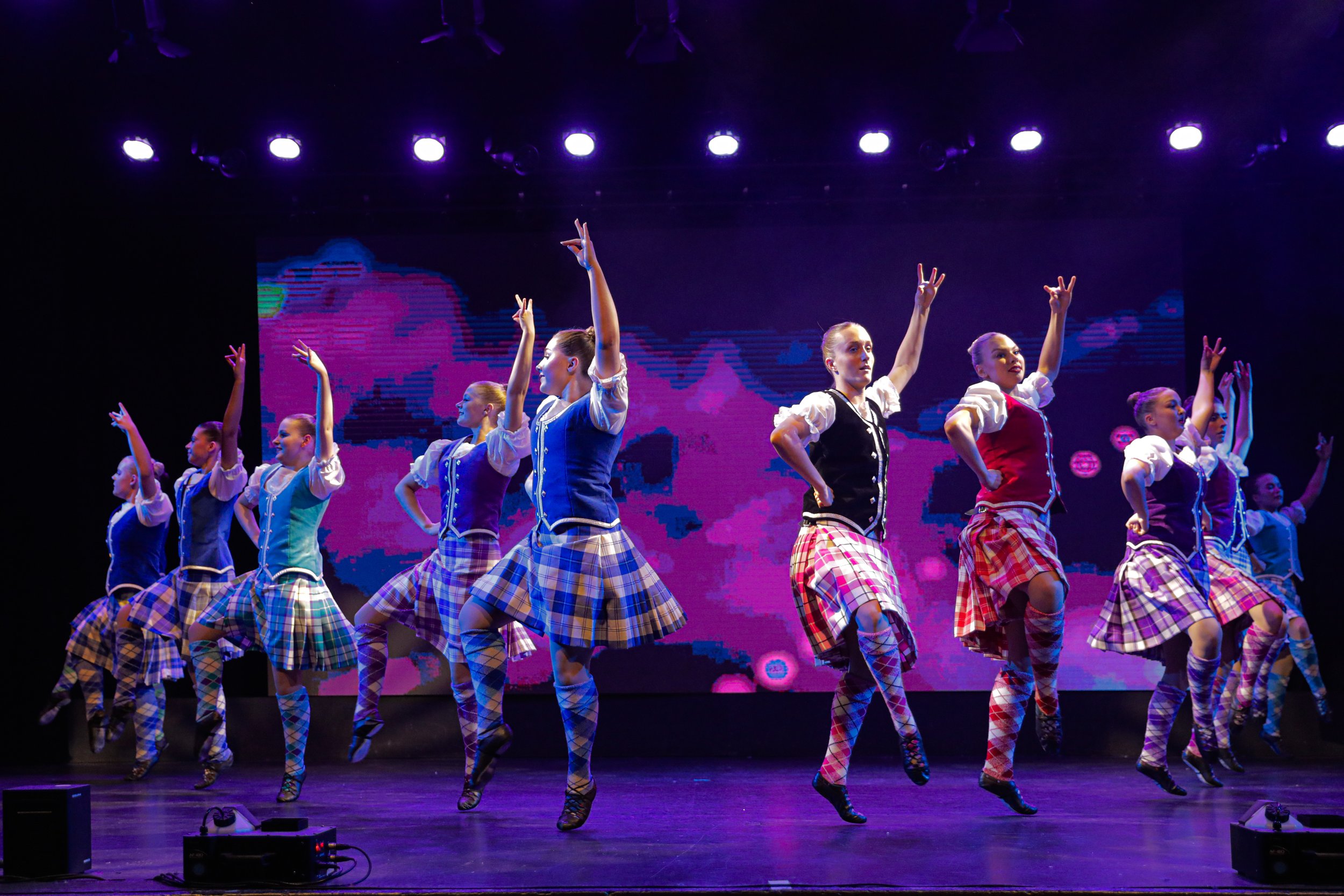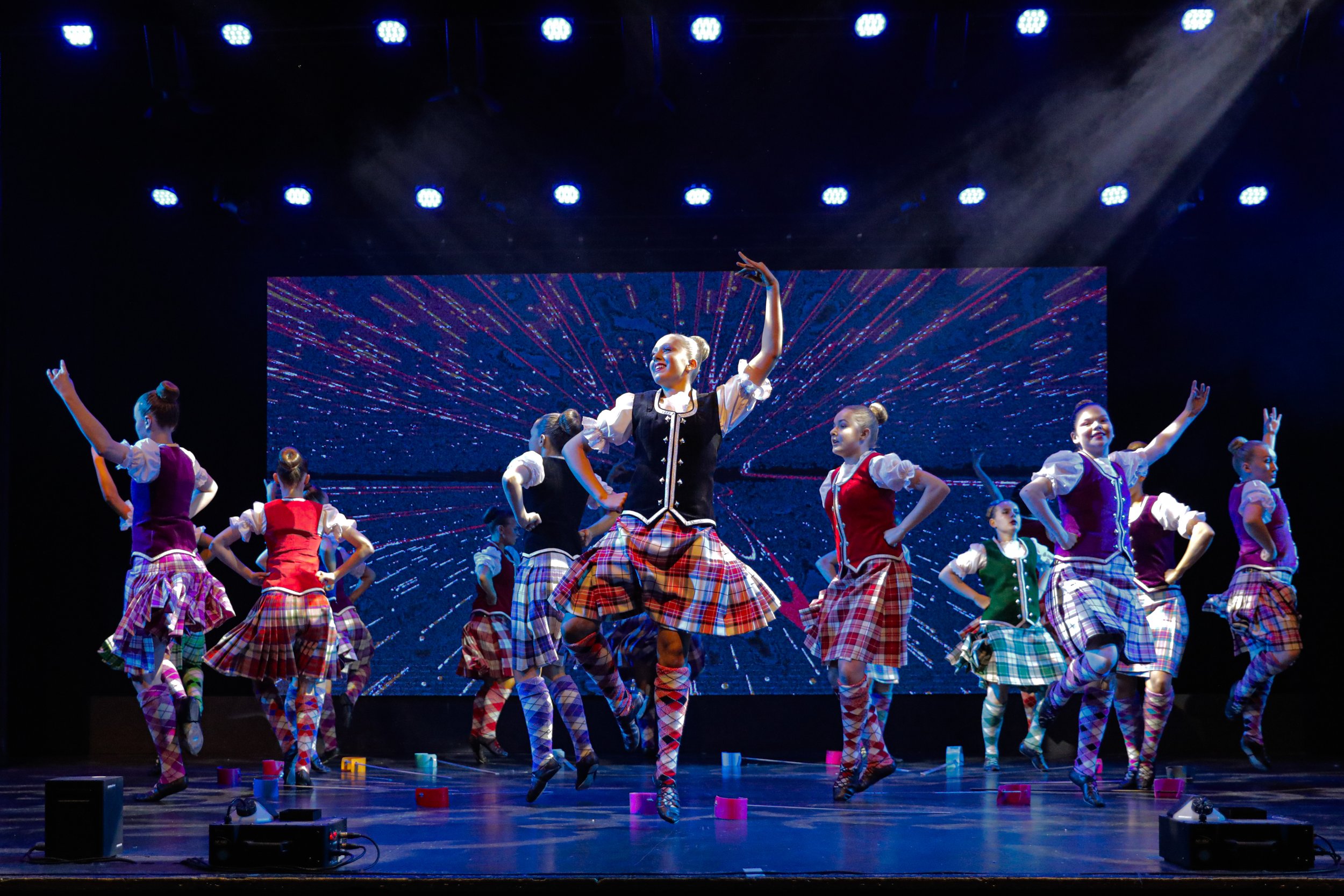
Highland
Highland Dancing, which requires the endurance and strength of an athlete and the artistry of a dancer, is the traditional solo dancing of Scotland. In the past, Scottish regiments used Highland Dancing as exercise to keep the troops in shape, and ready for battle. Today, Highland Dancing is one of the premiere events at Highland Games throughout the world in Scotland, England, Northern Ireland, mainland Europe, USA, Canada, South Africa, Australia, New Zealand and Japan. In order to be a successful competitive dancer, students require many hours of practice and study over a number of years. Students train mainly in 4 Highland dances, namely, the Highland Fling, the Sword Dance, the Seann Triubhas and the Strathspey & Reel—all of which are performed in the traditional kilt. Scottish Highland Dancing is regarded as being one of the most sophisticated forms of national dancing in the world. It is almost impossible for dance historians to separate fact from fiction, but the following descriptions are the most credible!
1. Highland Fling
Together with the Sword Dance, the Highland Fling is probably the most famous of the Scottish Highland Dances. Tullochgorm was the earliest form of Highland Fling, but towards the end of the 18th century it had undergone changes and improvements. It is thought to have evolved about 1790, when legend has it that a shepherd boy on a hillside watched stags rearing and wheeling. The boy tried to copy the stag’s antics and hence we have the graceful curve of the hands and arms depicting the stag’s antlers.
The dance should be danced on the same spot throughout, because clansmen traditionally danced on their targes (leather covered studded shield).
2. Sword Dance
Originated in 1054 when Malcolm Canmore crossed his sword over the sword of his slain opponent, symbolizing the sign of the Cross, and danced over them in exultation. After that, the dance would be performed before a battle. If the sword was touched it was deemed to be a bad omen! Before 1850, the steps were danced clockwise round the sword, not anti-clockwise as nowadays.
3. Seann Triubhas
Said to reflect the Highlanders contempt at having to wear trousers when the kilt was prohibited after the 1745 rebellion. The Act of Proscription in 1746 banned the wearing of Highland dress, the carrying of arms and the playing of bagpipes. In other words, the dance originated as a political protest. The slow tempo shows the dancers attempt to shake off the offending garment and the fast tempo shows the pleasure at the rescinding of the ban in 1782. Many of the movements are balletic and are influenced by French style of embellishments such as pirouettes.
4. Strathspey & Highland Reel
Very little reliable information is known about the origin of Strathspeys and Reels, but they are known to have been danced towards the end of the 17th century and Jacobite days. The slow movement is thought by many to be a mourning dance following the path of the river “Strath” in the valley of the “Spey”. The Highland Reel is a quicker and livelier form of the Strathspey and was known to have been taught from about 1740.










Our highland classes
Hanover Community Centre
MONDAY
5:45pm - 6:15pm : British Medallion Highland
7:45pm - 8:15pm : British / Premier Award & Advanced Highland
SATURDAY
9:30am - 10:00am : Bronze / Silver Highland
11:00am - 11:30am : Silver Highland
1:30pm - 2:00pm : Beginners / First Steps / Pre-Bronze / Bronze Highland
Kinellar Community Centre
WEDNESDAY
4:30pm - 5:00pm : First steps Highland
6:00pm - 6:30pm : Pre-Bronze / Bronze Highland
Balmedie Leisure Centre
TUESDAY
5:15pm - 5:45pm : Gold Highland
WEDNESDAY
4:45pm - 5:15pm : First Steps / Pre-Bronze Highland


